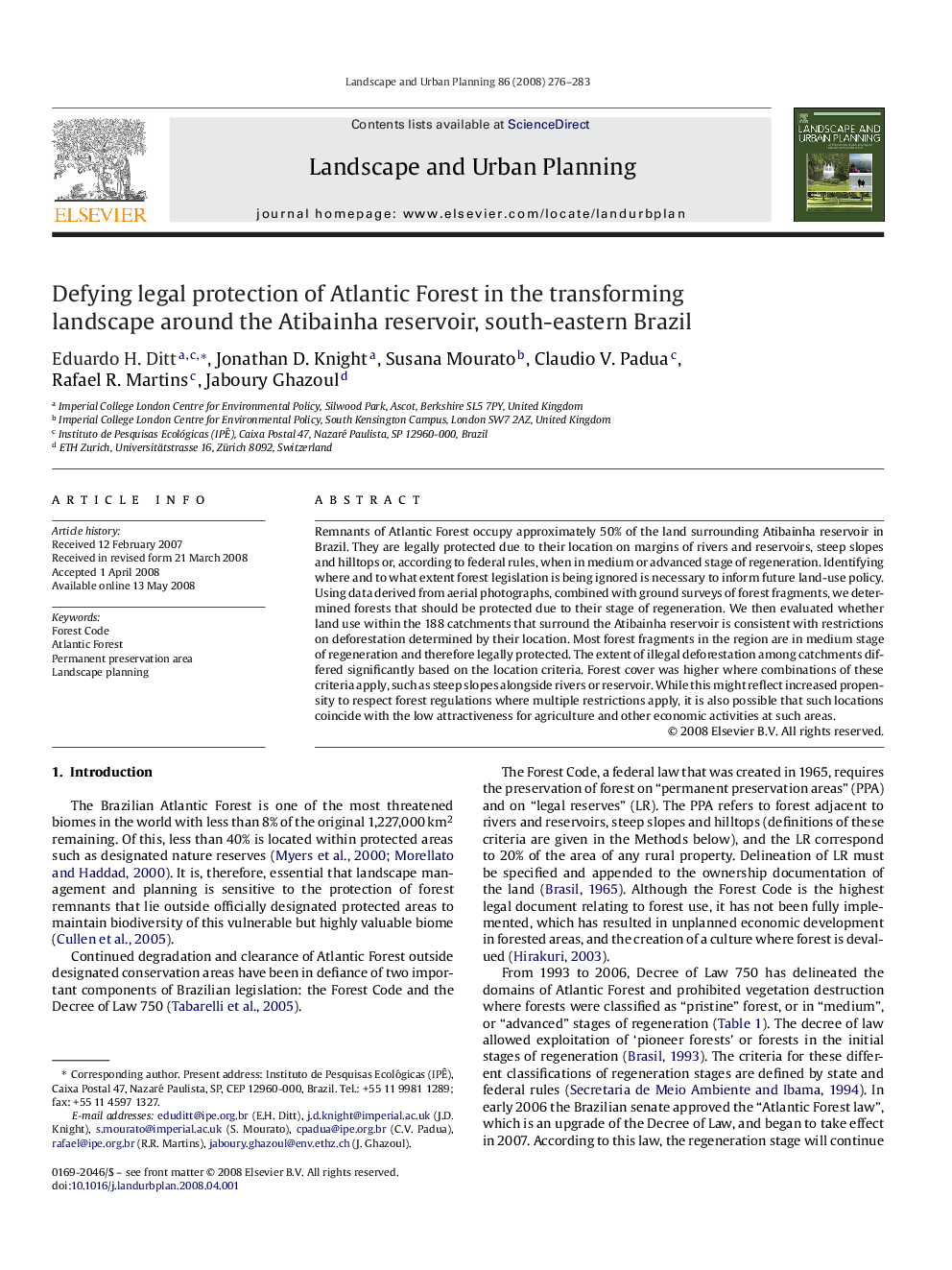| Article ID | Journal | Published Year | Pages | File Type |
|---|---|---|---|---|
| 1050108 | Landscape and Urban Planning | 2008 | 8 Pages |
Remnants of Atlantic Forest occupy approximately 50% of the land surrounding Atibainha reservoir in Brazil. They are legally protected due to their location on margins of rivers and reservoirs, steep slopes and hilltops or, according to federal rules, when in medium or advanced stage of regeneration. Identifying where and to what extent forest legislation is being ignored is necessary to inform future land-use policy. Using data derived from aerial photographs, combined with ground surveys of forest fragments, we determined forests that should be protected due to their stage of regeneration. We then evaluated whether land use within the 188 catchments that surround the Atibainha reservoir is consistent with restrictions on deforestation determined by their location. Most forest fragments in the region are in medium stage of regeneration and therefore legally protected. The extent of illegal deforestation among catchments differed significantly based on the location criteria. Forest cover was higher where combinations of these criteria apply, such as steep slopes alongside rivers or reservoir. While this might reflect increased propensity to respect forest regulations where multiple restrictions apply, it is also possible that such locations coincide with the low attractiveness for agriculture and other economic activities at such areas.
